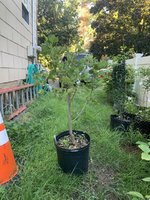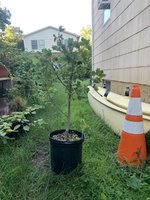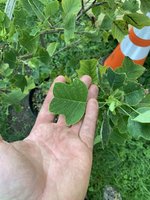Jzack605
Chumono
I grabbed this little Liriodendron “Little Volunteer” at a great nursery in CT that has some interesting plants. It’s got these great small leaves and unlike the straight species it is a dwarf and should max out at 20’. It was on sale and bought it with the intention of planting it. Unfortunately I brought it home and realize, I really have nowhere for it.
so what do you all think? Bonsai a Tulip tree? It may require an air layer to fix the long leggy trunk


so what do you all think? Bonsai a Tulip tree? It may require an air layer to fix the long leggy trunk




